Salmonellosis Symptom Checker for Pregnancy
Check if your symptoms might indicate Salmonellosis
This tool helps you distinguish Salmonellosis symptoms from common pregnancy discomforts. Based on the latest medical guidelines, it provides guidance on when to seek medical attention.
Select symptoms you're experiencing
Results
When Salmonellosis is defined as a foodborne infection caused by Salmonella bacteria, pregnant individuals face unique challenges. At the same time, Pregnancy is a physiological state where a fertilized egg develops into a fetus inside the uterus, bringing rapid hormonal shifts, a changing immune response, and heightened nutritional needs.
How Salmonella Causes Infection
The bacteria live in the intestines of animals and can contaminate raw eggs, undercooked poultry, unpasteurized milk, and even fresh produce that contacts contaminated water. When you consume these foods, the bacteria survive the acidic stomach environment, attach to the lining of the small intestine, and release toxins that trigger inflammation.
Key factors that increase the chance of infection include inadequate cooking temperatures, cross‑contamination in the kitchen, and poor refrigeration. In the United Kingdom, Public Health England reports around 30,000 cases of salmonellosis each year, with most linked to eggs and poultry.
Why Pregnant People Are More Susceptible
During Pregnancy, the maternal immune system shifts toward a more tolerant state to protect the developing fetus. This modulation reduces the body’s ability to mount a rapid response against certain bacterial invaders, including Salmonella bacteria. Additionally, progesterone slows gastrointestinal motility, giving the pathogen more time to multiply.
Studies from the University of Manchester (2023) show that pregnant patients are 2‑3 times more likely to develop severe gastroenteritis from a given dose of Salmonella compared with non‑pregnant adults.
Common Symptoms and How to Distinguish Them From Normal Pregnancy Changes
Both salmonellosis and pregnancy can cause nausea, vomiting, and abdominal discomfort, making it tricky to tell them apart. However, infection usually brings a distinct pattern:
- High‑grade fever (above 38°C/100.4°F) - rare in normal pregnancy.
- Watery, often bloody diarrhoea lasting more than 24 hours.
- Severe abdominal cramps that do not improve with typical pregnancy‑related measures.
- Sudden onset of chills or muscle aches.
If you notice any of these signs, especially fever combined with diarrhoea, treat it as a potential infection rather than a pregnancy‑related upset.
Risks to the Fetus and Pregnancy Outcomes
While most cases of salmonellosis resolve without harming the baby, the infection can lead to serious complications:
- Dehydration - loss of fluids can reduce uterine blood flow, potentially affecting fetal growth.
- Preterm labour - inflammatory signals may trigger early contractions.
- Severe infection (bacteremia) can cross the placental barrier, leading to fetal infection or miscarriage.
Research published in the British Medical Journal (2022) found that infection‑related hospitalisation during the third trimester was associated with a 1.5% increase in preterm birth rates.
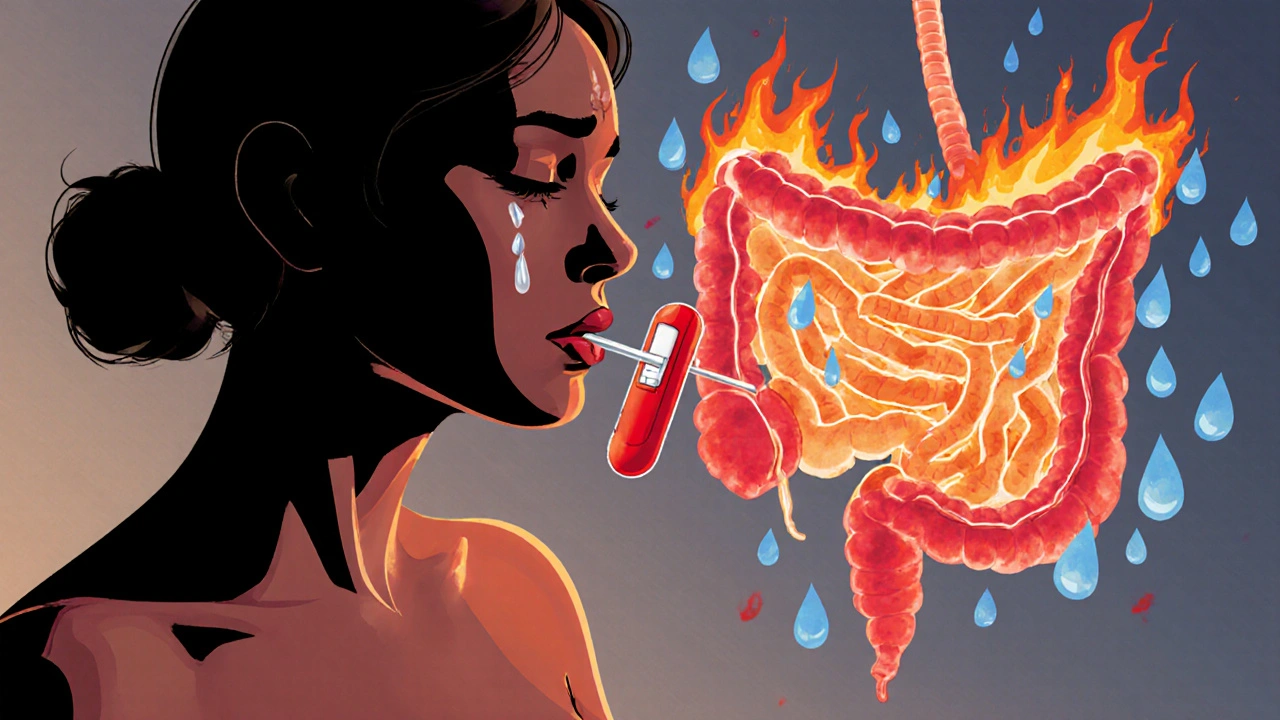
Diagnosis and Medical Care
Prompt medical attention is essential. Your clinician will usually:
- Take a detailed food‑history to pinpoint possible sources.
- Order stool cultures or PCR tests to confirm Salmonella bacteria.
- Check blood work for signs of dehydration, electrolyte imbalance, and inflammatory markers.
- Assess fetal well‑being via ultrasound and non‑stress testing if you’re beyond 24 weeks.
Because antibiotics can alter the natural gut flora of the newborn, doctors weigh the benefits carefully. In most mild cases, supportive care without antibiotics is preferred.
Safe Treatment Options & Home Care
Key goals are to stay hydrated, manage fever, and prevent complications:
- Drink oral rehydration solutions (ORS) or clear broths every few hours. Small, frequent sips work better than large gulps.
- Use acetaminophen for fever - avoid NSAIDs unless prescribed, as they can affect fetal circulation.
- If diarrhoea persists beyond 48 hours or you develop blood in stools, seek medical review for possible antibiotics such as ceftriaxone, which is deemed safe in pregnancy.
- Rest and avoid strenuous activity while your body fights the infection.
Food Safety Tips to Prevent Infection
Prevention is far easier than treatment. Follow these Food safety guidelines throughout pregnancy:
- Cook poultry to an internal temperature of at least 75°C (165°F).
- Consume only pasteurised dairy products and eggs.
- Wash fresh fruits and vegetables under running water; consider a vinegar soak for leafy greens.
- Separate raw meat, poultry, and seafood from ready‑to‑eat foods in the fridge.
- Discard any leftovers that have been sitting at room temperature for more than two hours.
Regular Prenatal care appointments also include dietary counselling - use them to get personalized advice.
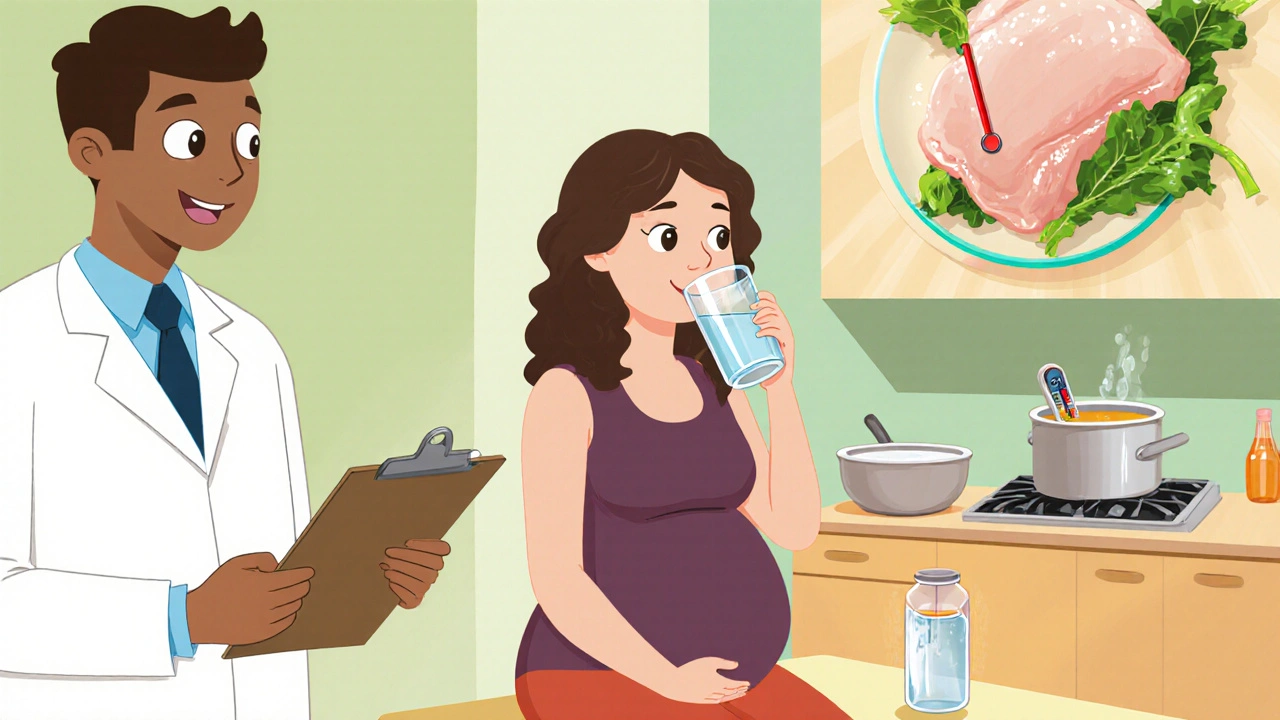
When to Seek Emergency Care
Even with diligent home care, some signs demand immediate attention:
- Fever above 39°C (102.2°F) that doesn’t respond to acetaminophen.
- Persistent vomiting that prevents fluid intake.
- Signs of severe dehydration: dizziness, reduced urine output, dry mouth.
- Blood in stool or black, tarry stools.
- Rapid fetal movements that suddenly stop.
Call emergency services or go to the nearest A&E department - time is critical for both mother and baby.
Quick Checklist for Expectant Parents
- Know the top food sources of salmonellosis - raw eggs, undercooked chicken, unpasteurised milk.
- Track any fever, diarrhoea, or vomiting and note when they started.
- Stay hydrated with ORS or electrolyte drinks.
- Keep a list of your prenatal appointments and ask about food safety.
- Call your midwife or GP if symptoms worsen or you notice any fetal concerns.
Comparison: Salmonellosis Symptoms vs. Common Pregnancy Discomforts
| Symptom | Typical in Salmonellosis | Typical in Pregnancy |
|---|---|---|
| Fever | High (≥38 °C) - common | Rare, low‑grade if any |
| Diarrhoea | Watery, possibly bloody | Usually mild or absent |
| Nausea/Vomiting | Sudden, severe, with fever | Gradual, often linked to hormonal shifts |
| Abdominal cramps | Sharp, localized, persistent | Dull, related to uterine growth |
| Dehydration signs | Common due to fluid loss | Less common unless vomiting severe |
Frequently Asked Questions
Can salmonellosis be passed to the baby during birth?
If the mother has an active bloodstream infection (bacteremia) close to delivery, the baby can be exposed during labor. This is rare, but clinicians will treat the mother with appropriate antibiotics and monitor the newborn.
Is it safe to take probiotic supplements while sick with salmonellosis?
Probiotics can help restore gut flora after the infection resolves, but they should not replace rehydration or medical treatment. Discuss with your GP before starting any supplement.
Do I need to avoid all dairy during salmonellosis?
Only unpasteurised dairy poses a risk. Pasteurised milk, cheese, and yoghurt are safe and can provide needed protein and calcium while you recover.
How long does it take to feel better after salmonellosis?
Mild cases often improve within 3‑5 days once rehydration is adequate. More severe infections may need 7‑10 days of treatment and follow‑up labs.
Should I be tested for salmonellosis after recovery?
Routine follow‑up testing isn’t required unless symptoms persist or you’re immunocompromised. Your healthcare provider may repeat a stool test to confirm clearance if you had a severe case.
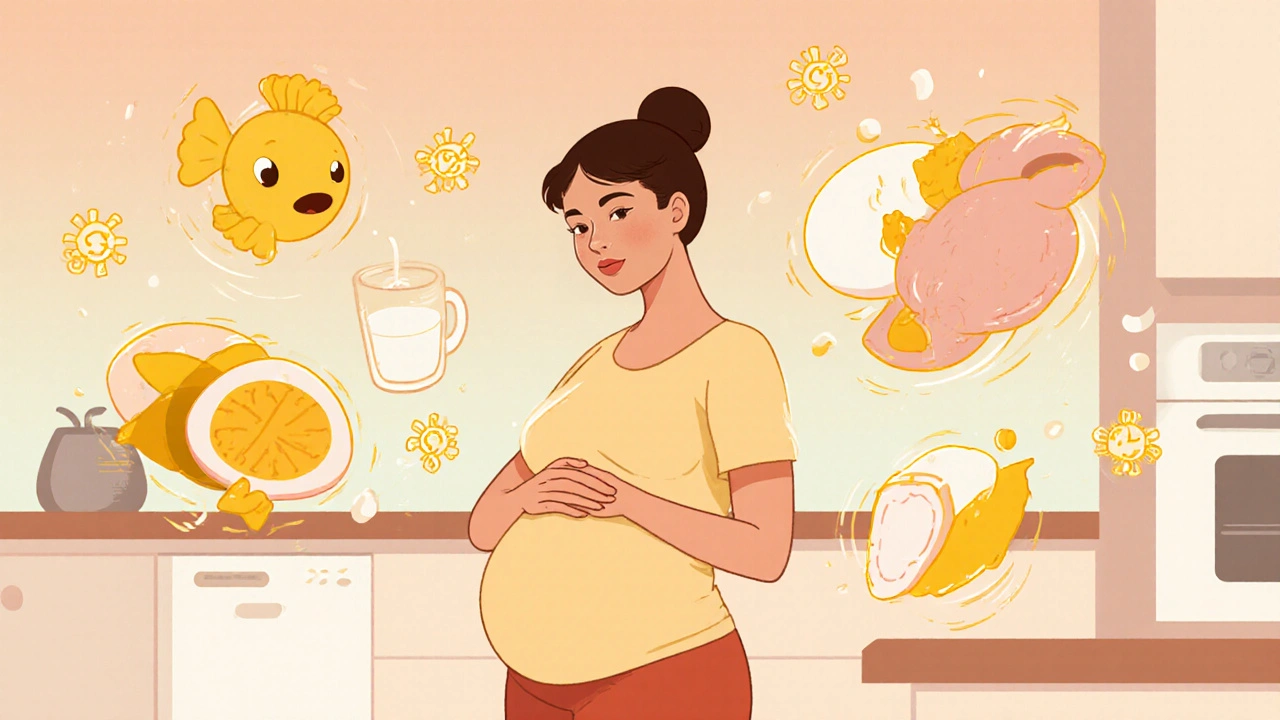
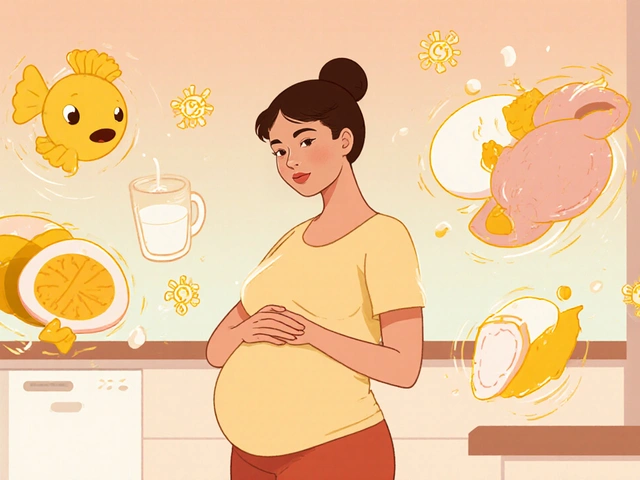
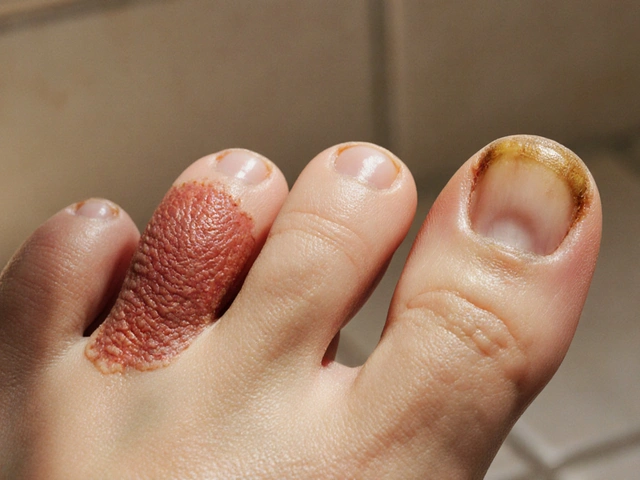





Leo Chan
October 19, 2025 AT 15:19Staying hydrated is key, especially when you're juggling pregnancy and a gut infection.
Small sips of oral rehydration solution keep the electrolyte balance without overwhelming the stomach.
Pair it with gentle rest and you’ll give your body the best chance to fight off Salmonella.
Latasha Becker
October 21, 2025 AT 13:11The pathophysiology delineated in the post aligns with the classic invasion mechanism of Salmonella enterica serovar Typhimurium, yet it omits the role of type III secretion systems in epithelial translocation.
Moreover, the recommendation to avoid NSAIDs neglects the fact that ibuprofen’s cyclooxygenase inhibition may, in certain scenarios, attenuate inflammatory cascades without compromising uteroplacental perfusion.
From a microbiological standpoint, stool PCR yields a sensitivity exceeding 95 % when executed within 48 h of symptom onset, rendering culture redundant in most outpatient settings.
Hence, the therapeutic algorithm could be refined to reflect current diagnostic hierarchies.
Finally, the claim that ceftriaxone is categorically safe disregards its classification as FDA Pregnancy Category B, which warrants a nuanced risk‑benefit analysis.
parth gajjar
October 23, 2025 AT 11:03Salmonella is a silent tyrant lurking in the unsuspecting breakfast plate.
Its virulence is a whispered lament of evolutionary cunning.
When a pregnant soul ingests the contaminated morsel the body’s immune orchestra falters.
The progesterone‑induced sluggish gut becomes a banquet hall for the bacterial horde.
Fever erupts like a rebellious torch lighting the night sky.
Diarrhoea flows relentless, a river of betrayal.
Dehydration creeps, stealing the very lifeblood meant for the unborn.
Each cramp is a reminder of mortality’s cold grip.
The placenta, a fragile barrier, trembles at the prospect of bacteremia.
Medical intervention, though necessary, feels like a cold hand on a fevered brow.
Antibiotics may erase the pathogen but also strip the newborn of its natural flora.
The dilemma is a philosophical quandary wrapped in clinical protocol.
In the quiet of the hospital ward the mother’s mind wanders to ancient myths of fire and water.
She dreams of purity restored through simple broth and rest.
Yet the modern world demands precise lab values and imaging.
Ultimately survival hinges on the delicate dance between aggressive treatment and gentle nurture.
Catherine Viola
October 25, 2025 AT 08:55It is worth noting that the surveillance data referenced by public health agencies often excludes cases linked to clandestine agricultural practices, thereby skewing the perceived incidence of salmonellosis.
Furthermore, the alleged independence of laboratory testing is compromised when funding streams originate from agribusiness conglomerates that stand to profit from relaxed regulatory oversight.
As such, the recommendation to rely solely on clinician‑directed stool cultures without consideration of potential institutional bias may be insufficient.
A more prudent approach would involve independent third‑party verification of test results.
sravya rudraraju
October 27, 2025 AT 05:47Ensuring proper hydration goes beyond merely drinking water; oral rehydration solutions provide a balanced electrolyte composition that supports both maternal hemodynamics and fetal perfusion.
In addition, modest physical activity such as gentle walking can stimulate gastrointestinal motility, thereby reducing bacterial overgrowth.
It is also advisable to schedule regular follow‑up appointments where the clinician can review laboratory trends, including serum electrolytes and inflammatory markers, to preempt any deterioration.
Should fever persist beyond 24 hours despite acetaminophen, a reassessment for possible bacteremia is warranted, and intravenous antibiotics may become necessary.
Finally, collaborating with a registered dietitian can tailor nutrient intake to accommodate increased metabolic demands while avoiding high‑risk foods, thus creating a comprehensive preventive framework.
Overall, a proactive, multidisciplinary approach empowers expectant mothers to navigate the infection with confidence and safety.
Ankitpgujjar Poswal
October 29, 2025 AT 03:39Stop ignoring the obvious-if you’re vomiting for more than eight hours, call emergency services now!
ashanti barrett
October 31, 2025 AT 01:31I hear how overwhelming it can feel when nausea and fever strike at once, especially when you’re already juggling prenatal appointments.
Prioritizing small, frequent sips of electrolyte‑rich fluids can stave off dehydration without upsetting a sensitive stomach.
Pair that with acetaminophen for the fever and you’ll give your body the tools it needs to focus on recovery.
Remember, you’re not alone-your care team is there to adjust the plan as your symptoms evolve.
jagdish soni
November 1, 2025 AT 23:23Imagine the gut as a bustling market and salmonella as an unwanted trader it sneaks in under the veil of a raw egg it spreads chaos yet the body can negotiate peace with proper hydration and rest the key is balance not panic and remember every sip is a step toward reclaiming harmony.
Madhav Dasari
November 3, 2025 AT 21:15Hey, you’ve got this-keep the ORS handy, listen to your body, and don’t hesitate to ring your midwife if anything feels off.
Small steps add up and soon you’ll be back on track.